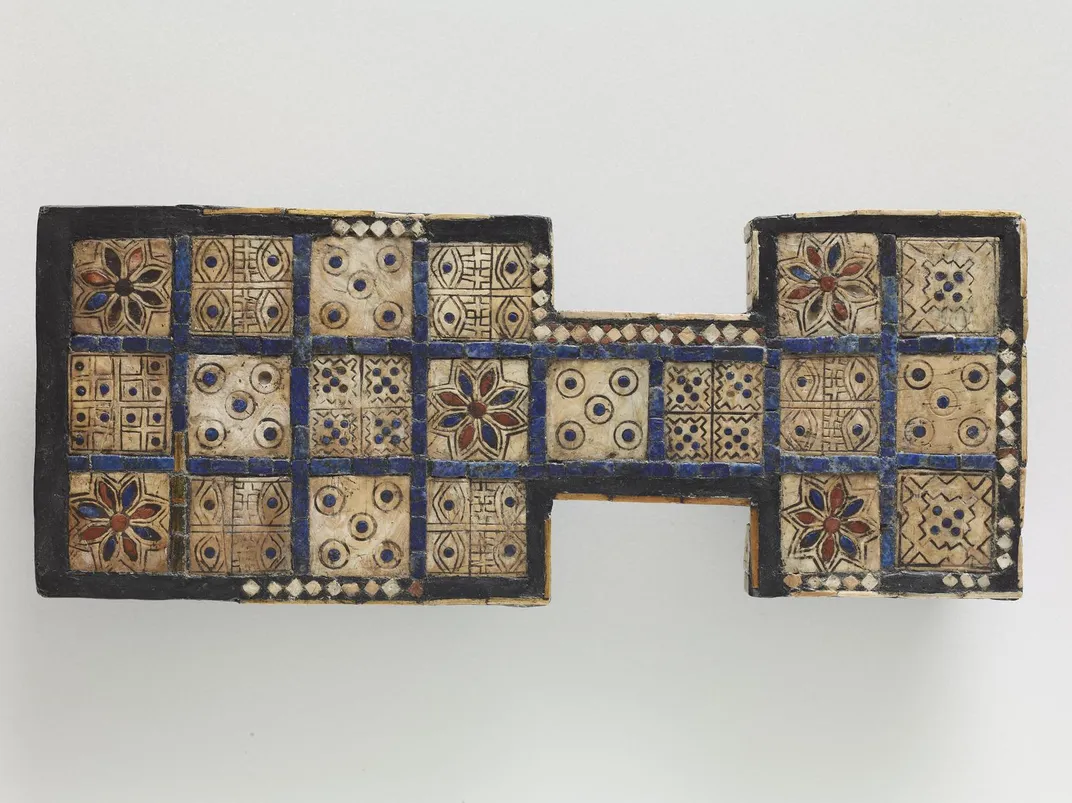You Can Now Download 1.9 Million Free Images From the British Museum
The London institution’s online offerings include 280,000 newly added Creative Commons images
:focal(830x464:831x465)/https://tf-cmsv2-smithsonianmag-media.s3.amazonaws.com/filer/53/35/53353435-17fe-47ff-b72a-bc3e0ae9feca/585991001.jpg)
To help slow the spread of the COVID-19 pandemic, the British Museum will sadly remain shuttered for the foreseeable future. But officials at the London institution are still serving up a daily dish of culture via the museum’s website, which houses a vast repository of digitized items from its collections.
A total of 1.9 million British Museum images—280,000 of which are new additions—are now available to view online, reports Sarah Cascone for artnet News. Released under a Creative Commons 4.0 license, all of these photographs are free to download, adapt and use for non-commercial purposes—so long as the museum is credited. And, for the first time since the online catalog launched in 2007, users can explore the 4.5 million objects digitized to date on mobile phones and tablets.
The museum’s plan to up its digital presence isn’t new. In fact, this exact release was originally planned for later this year. Still, spurred by closures and cancellations worldwide, the institution’s team decided to debut the new images far ahead of schedule in hopes of bringing cultural solace to those sheltering at home.
Today we’re excited to launch a major revamp of our Collection online!
— British Museum (@britishmuseum) April 28, 2020
We’ve been working extra hard to bring you this update early so you can #MuseumFromHome even better than before.
Access the collection digitally wherever you are: https://t.co/a2CPohwarP pic.twitter.com/py0ppV4ktV
“We are delighted to be able to unveil this major revamp early, and hope that these important objects can provide inspiration, reflection, or even just quiet moments of distraction during this difficult time,” says the museum’s director, Hartwig Fischer, in a statement.
Allowing the public to download and transform images enables patrons to interact more fully with museum artifacts, making them participants in the creation of cultural history. As Andrea Wallace, an expert in cultural heritage law at the University of Exeter, told Smithsonian magazine earlier this year, designating materials as Creative Commons “transfers a lot of the power to the public.” This sentiment may be especially welcome during a time of increased isolation and uncertainty.
As Becky Ferreira reports for Vice, the revamp also includes a few digital tourism perks. Some of the objects on the site have been scanned and uploaded in such detail that viewers can explore nooks and crannies invisible to the naked eye. Among the artifacts rendered in such high definition are the Rosetta Stone; Hoa Hakananai’a, a Rapa Nui sculpture from Easter Island; the Game of Ur, a roughly 5,000-year-old board game that once delighted the residents of Mesopotamia; and a 1,600-year-old Chinese Admonitions Scroll.

Dante Gabriel Rossetti’s The Death of Breuze Sans Pitié, an 1857 watercolor depicting a pair of knights battling in a verdant forest, is another welcome newcomer. Acquired by the museum just last year, the artwork’s inclusion marks a relatively fast digitization turnaround. As Mark Brown reported for the Guardian last September, the Pre-Raphaelite painting entered the institution’s collections after a tumultuous journey, including a 67-year absence from the public eye that ended in 1993, when it reemerged at a London sale.
More close-ups will pop up in the weeks and months to come, according to Vice. In the meantime, virtual visitors have plenty to explore.
As Fischer says in the statement, “Whether you are a student, an artist, a scholar or are a lover of history and culture, this is an unparalleled resource to explore the richness, diversity and complexity of human history contained in the British Museum’s collection.”
/https://tf-cmsv2-smithsonianmag-media.s3.amazonaws.com/filer/f6/35/f6354277-f168-49b4-a054-5c3b475bcc3b/1613680302.jpg)
/https://tf-cmsv2-smithsonianmag-media.s3.amazonaws.com/accounts/headshot/10172852_10152012979290896_320129237_n.jpg)
/https://tf-cmsv2-smithsonianmag-media.s3.amazonaws.com/accounts/headshot/10172852_10152012979290896_320129237_n.jpg)